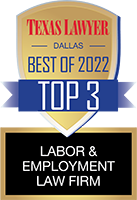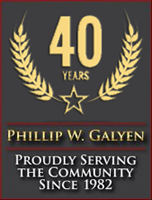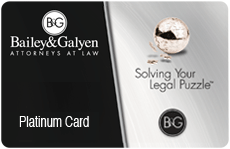Regulation of the provision of alcohol has existed in this state in one form or another since at least the 19th Century. As early as 1887, for example, the first iteration of Texas’ Dram Shop Act was passed.[1] This statute prohibited tavern keepers and others serving alcohol to minors, students, and “habitual drunkards.”[2] But the provisions of the Act do not make commercial servers of alcohol responsible under traditional theories of simple negligence. Rather, under the much harsher standard of the Act, “providing, selling, or serving” alcohol is made actionable only where it is shown that:
(1) at the time the provision occurred it was apparent to the provider that the individual being sold, served, or provided with an alcoholic beverage was obviously intoxicated to the extent that he presented a clear danger to himself and others; and
(2) the intoxication of the recipient of the alcoholic beverage was a proximate cause of the damages suffered.[3]
The threshold issue is therefore whether the defendant “provided,” “sold,” or “served” alcoholic beverages to the intoxicated patron. In this regard, the Texas Supreme Court has instructed that this requires: (1) the potential defendant be TABC-licensed to sell alcoholic beverages and to have either sold or served an alcohol beverage[4] to the intoxicated patron; or (2) the potential defendant, whether TABC licensed or not, sold an alcoholic beverage to the intoxicated patron.[5] Thus it has been held, for example, that a cause of action did not arise against a TABC-licensed facility where the allegedly intoxicated patron was not “sold, served or provided” alcohol, but was merely allowed to use the restroom.[6] Similarly, courts have held that a landlord of premises where alcoholic beverages are sold did not satisfy the definition of a “provider,” and thus could not be held liable under the Act.[7]
The Act next requires that at the time the provision occurred it was “apparent” to the provider that the individual being sold, served, or provided with the alcoholic beverage(s) was “obviously intoxicated to the extent that he presented a clear danger to himself and others.” A patron’s intoxication is “apparent” to a provider “when it is visible, evident, and easily observed.” Perseus, Inc. v. Canody, 995 S.W.2d 202, 206 (Tex.App.—San Antonio 1999, no pet.). See also Bruce v. K.K.B., Inc., 52 S.W.3d 250, 255-256 (Tex.App.—Corpus Christi 2001, pet. denied). Our courts have characterized this required showing as “an onerous burden of proof…approaching the common-law gross negligence standard.” The standard is an objective one, focusing not on what the provider actually knew in regards to the patron’s state of intoxication, but on what they should have known in light of the outward manifestations of intoxication exhibited by the individual in question:
The Dram Shop Act was intended “to provide a statutory remedy where the negligence of a bar was found to be the proximate cause of the individual’s injury.” Thus, the server of alcoholic beverages is held to an objective standard of what a reasonably prudent person would have observed as “obviously intoxicated,” whether or not there was a subjective intent to serve an intoxicated person.[8]
In making this showing, circumstantial evidence is sufficient to establish such “obvious intoxication.”[9]
Finally, for a cause of action to arise under the Act against a provider of alcohol, it must be shown that the patron’s intoxication was the proximate cause of the plaintiff’s damages. Thus, establishment of the proximate cause element focuses not on acts of omissions of the provider, but on the acts or omissions of the intoxicated patron.[10]
[1] See Acts 1887, 20th Legislature, R.S., ch. 79, §§ 1-8
[2] Id. See also Haynes v. Haberzettle, 152 S.W. 717 (Tex. Civ. App.–Texarkana 1919, no writ). A “habitual drunkard,” within the meaning of the Act, was defined by the courts as a person “who makes it a habit, or who habitually becomes intoxicated by the voluntary use of intoxicating liquors.” See e.g. Campell v. Jones, 21 S.W. 723, 723-24 (Tex. Civ. App. 1893).
[3] Tex. Alco. Bev Code § 2.02(b).
[4] The Act defines an alcoholic beverage as one that contains more than one-half of one percent of alcohol by volume. See Tex. Alco. Bev Code §1.04(1).
[5] Smith v. Merritt, 940 S.W.2d 602, 605 (Tex.1997), citing Tex. Alco. Bev Code §2.01(1).
[6] See Moore v. Shoreline Ventures, Inc., 903 S.W.2d 900, 903 (Tex.App.—Beaumont 1995, no writ).
[7] See e.g. Cantu v. Depriest, 1997 WL 348543, *1 (Tex. App.—Dallas 1997, no writ).
[8] Fay-Ray Corp. v. Texas Alcoholic Beverage Com’n, 959 S.W.2d 362, 366 (Tex.App.—Austin 1998, no writ) (emphasis in original). See also Steak & Ale of Texas, Inc. v. Borneman, 62 S.W.3d 898, 902 (Tex.App.—Fort Worth 2001, no pet.). As the Court in Perseus, Inc. v. Canody, 995 S.W.2d 202 (Tex.App.—San Antonio 1999, no pet.) observed, were the standard a subjective one “then a provider of alcohol could always escape liability by merely turning a blind eye to signs of intoxication that are plain, manifest, and open to view.” Canody, 995 S.W.2d at 206.
[9] Perseus, Inc. v. Canody, 995 S.W.2d 202 (Tex.App.—San Antonio 1999, no pet.). See also Cianci v. M. Till, Inc., 34 S.W.3d 327, 331 (Tex.App—Eastland 2000, no pet.).
[10] See Borneman v. Steak & Ale of Texas, Inc., 22 S W.3rd 411, 413 (Tex 2000). See also Steak & Ale of Texas, Inc. v. Borneman, 62 S.W. 3rd 898, 910 (Tex., App.—Fort Worth 2001, no writ).








